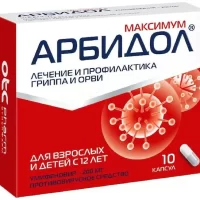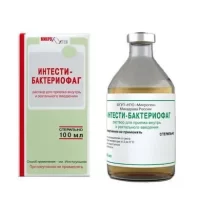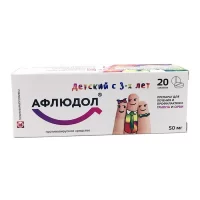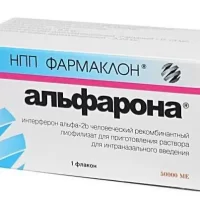Description
Normomed Pharmacodynamics
Inosin Pranobex is a synthetic purine derivative that is a complex containing inosin and M,M-dimethylamino-2-propapol in a molar ratio of 1:3. It has immunostimulatory activity and nonspecific antiviral action. The effectiveness of the complex is determined by the presence of inosine, the second component increases its availability to lymphocytes.
It restores functions of lymphocytes under immunodenuria, increases blastogenesis in monocyte population, stimulates expression of membrane receptors on T-helper surface, prevents decrease in activity of lymphocytes under glucocorticosteroids influence, normalizes thymidip inclusion in them. Inosin Praiobex stimulates T-lymphocyte and natural killer activity, T-suppressor and T-helper functions, increases immunoglobulin G (Ig G), interferopa-gamma production, interleukins IL-1 and IL-2, reduces anti-inflammatory cytokine formation – IL-4 and IL-10, potentiates chemotaxis of neutrophils, monocytes and macrophages.
The drug exhibits in vivo antiviral activity against herpes simplex virus, cytomegalovirus, measles virus, human T-cell lymphoma virus (type III), polioviruses, influenza A and B viruses, human enterocytopathogenic virus (ENV), encephalomyocarditis and equine encephalitis viruses. The mechanism of antiviral action of Pranobex inosine is associated with inhibition of viral RNA and dihydropteroat synthetase participating in replication of some viruses, it enhances the synthesis of lymphocytes mPPC suppressed by viruses, which is accompanied by reduction of synthesis of viral RNA and translation of viral proteins, increases production by lymphocytes of alpha and gamma interferons having antiviral properties. When administered in combination, it increases the effect of ipterferon-alpha, acyclovir and zidovudine.
Indications
– Treatment of influenza and other acute respiratory infections;
– Infections caused by herpes virus types I and II: genital and labial herpes, herpetic keratitis, varicella, shingles;
– Infectious myonucleosis caused by Epstein-Barr virus;
– cytomegalovirus infection;
– Severe measles;
– papillomavirus infection: papillomas of the larynx/voice cords (fibrous type), papillomavirus infection of male and female genitalia, warts;
– Subacute sclerosing panencephalitis;
– molluscum contagiosum.
Contraindications
– Hypersensitivity to pranobex inosine and other components of the drug;
– gout;
– urolithiasis;
– chronic renal insufficiency;
– arrhythmias;
– Pregnancy and breast-feeding;
– Children under 3 years of age (body weight less than 15-20 kg).
Caution
Caution should be exercised when concomitant administration with xanthine oxidase inhibitors, diuretics, zidovudine, in acute hepatic failure. It is contraindicated for pregnant and nursing women, because the drug safety has not been investigated.
Directions for use and dosages
- Tablets are taken orally after a meal with plenty of water. The recommended daily dose for adults and children aged 3 years and older (body weight over 15-20 kg) is 50 mg/kg of body weight in 3-4 doses, which averages 6-8 tablets daily for adults and 1/2 tablet per 5 kg of body weight for children. In severe forms of infectious diseases the dose can be increased individually up to 100 mg/kg body weight per day divided into 4-6 doses.
- Maximum daily dose for adults is 3-4 g/day, for children aged 3 years and older – 50 mg/kg/day.
- Duration of treatment:
For acute illness, the duration of treatment in adults and children is usually 5 to 14 days. Treatment should be continued for 2 days after disappearance of clinical symptoms. If necessary, the duration of treatment may be increased individually under the control of a physician. - In chronic recurrent diseases, treatment in adults and children is carried out in several courses of 5-10 days at intervals of 8 days. During maintenance therapy, the dose can be reduced to 500-1000 mg/day (1-2 tablets) for 30 days.
- In herpes infections for adults and children it is prescribed for 5-10 days until disappearance of symptoms, in asymptomatic period – 1 tablet 2 times a day during 30 days for reduction of relapses.
- In cases of papillomavirus infection the drug is indicated for adults 2 tablets 3 times a day, for children – 1/2 tablet per 5 kg/body weight per day in 3-4 times during 14-28 days as a mopotherapy.
- In cases of cervical dysplasia associated with human papilloma virus, 2 tablets 3 times a day for 10 days and then there are 2-3 similar courses with an interval of 10-14 days.
- For recurrent acute condylomas in adults: 2 tablets 3 times a day, in children: 1/2 tablet per 5 kg body weight per day in 3-4 doses or as a mopotherapy or in combination with surgical treatment for 14-28 days, further with triple repeating of the indicated course at 1-measure intervals. Use in elderly patients. There is a need to correct the dose peg, the drug is used as in middle-aged patients. It should be taken into account that elderly patients are more likely to have increased uric acid concentration in blood serum and urine than middle-aged patients.
- Use in patients with renal and hepatic insufficiency. Against the background of treatment with Normomed drug, control of uric acid in serum and urine should be carried out every 2 weeks. Monitoring of liver enzymes activity is recommended every 4 weeks during long-term treatment with the drug.





